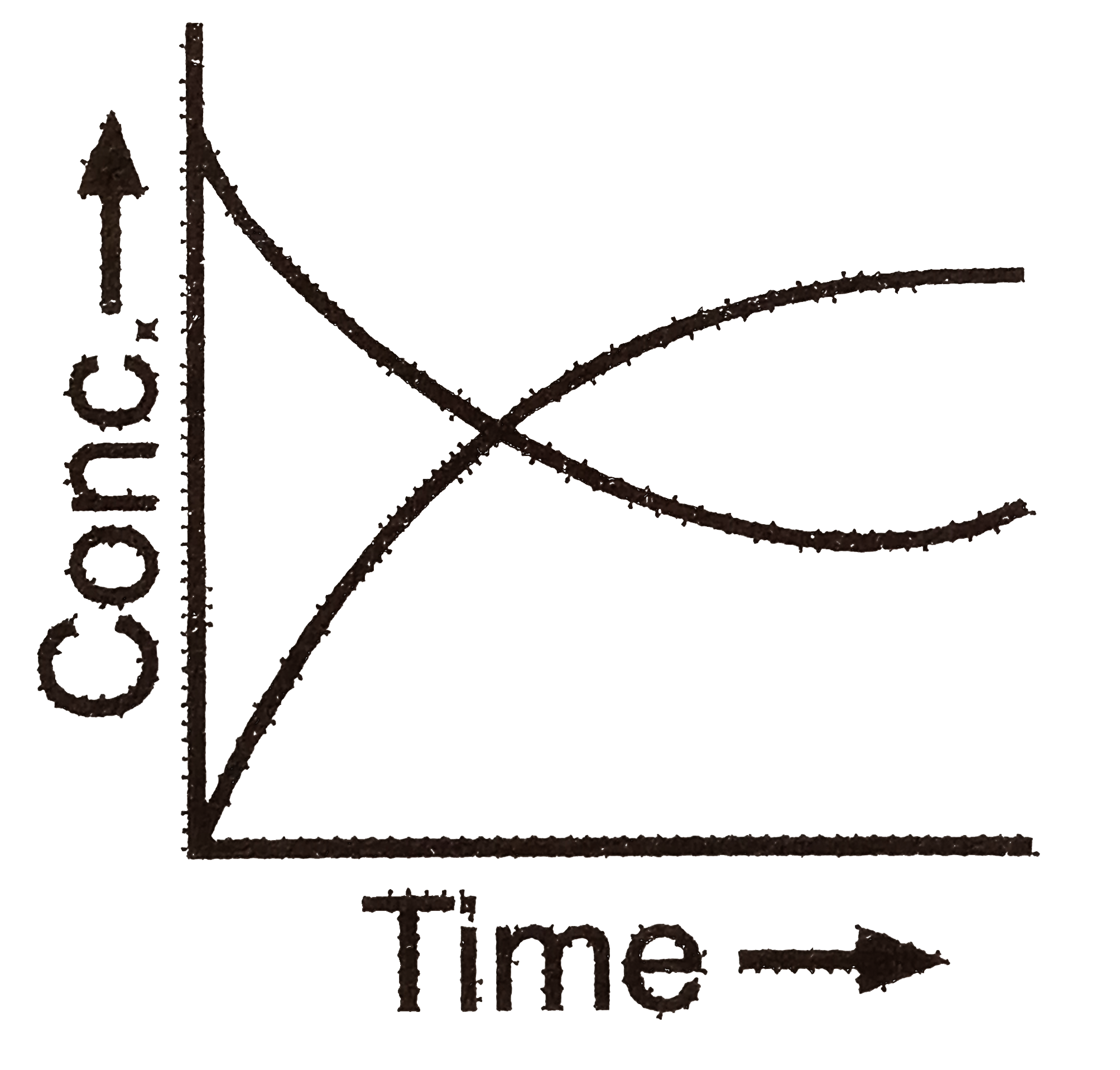
-OH group is substituted by -Br. The slowest step is dehydration. Which of the following is correct comparison of rate constant K1andK2?
k1=k2
k1>k2
k1<k2
cannot be predict
The correct Answer is:C
Step by step video, text & image solution for -OH group is substituted by -Br. The slowest step is dehydration. Which of the following is correct comparison of rate constant K_(1) and K_(2)? by Chemistry experts to help you in doubts & scoring excellent marks in Class 12 exams.
Updated on:21/07/2023Topper's Solved these Questions
- ALCOHOLS AND ETHERSBOOK - HIMANSHU PANDEYCHAPTER - ALCOHOLS AND ETHERSEXERCISE - Level 2 (Q.26 To Q.50)
25 Videos
- ALCOHOLS AND ETHERSBOOK - HIMANSHU PANDEYCHAPTER - ALCOHOLS AND ETHERSEXERCISE - Level 2 (Q.51 To Q.75)
25 Videos
- ALCOHOLS AND ETHERSBOOK - HIMANSHU PANDEYCHAPTER - ALCOHOLS AND ETHERSEXERCISE - Level 1 (Q.26 To Q.50)
25 Videos
- AMINESBOOK - HIMANSHU PANDEYCHAPTER - AMINESEXERCISE - Subjective Type Problems
5 Videos
Similar Questions
The rate and mechamical reaction are studied in chemical kinetics. The elementary reactions are single step reaction having no mechanism. The order of reaction and molecularity are same for elementary reactions. The rate of forward reaction aA+bB→cC+dD is given as:
rate=(dxdt)=−1ad[A]dt=−1bd[B]dt=1cd[C]dt=1dd[D]dt or expression can be written as : rate =K1[A]a[B]b−K2[C]c[D]d. At equilibrium, rate =0. The constants K,K1,K2 are rate constants of respective reaction. In case of reactions governed by two or more steps reaction mechanism, the rate is given by the slowest step of mechanism.
The rate of formation of SO3 in the following reaction,
2SO2+O2→2SO3 is 10gsec−1
The rate of disappearance of O2 will be:
View SolutionThe rate law expresison is given for a typical reaction, n1A+n2B→P as r=k[A]n[B]n2. The reaction completes only in one step and A and B are present in the solution. If the reaction occurs in more than one step, then the rate law is expressed by consdering the slowest step, i.e., for SNl reaction r=k[RX]. If the eraction occurs in more than one step and the rates of the steps involved are comparable, then steady state approximation is conisdered, i.e., the rate of formation of intermediate is always equal to the rate of decompoistion of the intermediate. Conisder the reaction:
⎡⎢ ⎢⎣I2k2⇐⇒k12I(rapid equilibrium)H2+2Ik3−−→2HI(slow)⎤⎥ ⎥⎦
Which of the following expresison is correct?
View Solution
Knowledge Check
The forward reaction rate for the nitric oxide-oxygen reaction
2NO+O2→2NO2 has the rate law as:
Rate=k[NO]2[O2].
If the mechanism is assumed to be:
2NO+Okeq⇐⇒ , (rapid equilibration)
N2O2+O2k2−−→2NO2 (slow step),
then which of the following is (are) correct?
(I) Rate constant =keqk2 , (II) [N2O2]=keq[NO]2
(III) [N2O2]=keq[NO] , (IV) Rate constant =k2
The correct option isAI, IIBIII, IVCI, IIIDNone of thesewhich of the following option is correct with respect to comparison of Henry's constant KH of different gases at different temperatures?
AKH of O2 at 293 K<KH of Ar at 293 KBKH of O2 at 293K>KH of N2 at 293KCKH of CH4 at 298 K<KH of O2 at 293KDKH of He at 293K<KH of N2 at 293KThe rate and mechamical reaction are studied in chemical kinetics. The elementary reactions are single step reaction having no mechanism. The order of reaction and molecularity are same for elementary reactions. The rate of forward reaction aA+bB→cC+dD is given as:
rate=(dxdt)=−1ad[A]dt=−1bd[B]dt=1cd[C]dt=1dd[D]dt or expression can be written as : rate =K1[A]a[B]b−K2[C]c[D]d. At equilibrium, rate =0. The constants K,K1,K2 are rate constants of respective reaction. In case of reactions governed by two or more steps reaction mechanism, the rate is given by the slowest step of mechanism.
At the point of intersection of the two curve shown for the reaction: A→nB the concentration of B is given by:
 A(a) nA02B(b) A0n−1C(c ) nA0n+1D(d) (n−1)(n+1)A0
A(a) nA02B(b) A0n−1C(c ) nA0n+1D(d) (n−1)(n+1)A0
The rate law expresison is given for a typical reaction, n1A+n2B→P as r=k[A]n[B]n2. The reaction completes only in one step and A and B are present in the solution. If the reaction occurs in more than one step, then the rate law is expressed by consdering the slowest step, i.e., for SNl reaction r=k[RX]. If the eraction occurs in more than one step and the rates of the steps involved are comparable, then steady state approximation is conisdered, i.e., the rate of formation of intermediate is always equal to the rate of decompoistion of the intermediate. Conisder the reaction:
⎡⎢ ⎢⎣I2k2⇐⇒k12I(rapid equilibrium)H2+2Ik3−−→2HI(slow)⎤⎥ ⎥⎦
If we increase the concentration of I2 two times, then the rate of formation of HI will
View SolutionIf K is dissociation constant of H2OandKW is ionic product of H2O then which of the following is correct:-
View SolutionThe rate and mechamical reaction are studied in chemical kinetics. The elementary reactions are single step reaction having no mechanism. The order of reaction and molecularity are same for elementary reactions. The rate of forward reaction aA+bB→cC+dD is given as:
rate=(dxdt)=−1ad[A]dt=−1bd[B]dt=1cd[C]dt=1dd[D]dt or expression can be written as : rate =K1[A]a[B]b−K2[C]c[D]d. At equilibrium, rate =0. The constants K,K1,K2 are rate constants of respective reaction. In case of reactions governed by two or more steps reaction mechanism, the rate is given by the slowest step of mechanism.
For the reaction, 2NO+Br2⇔2NOBr, the mechanism is given in two steps:
(1)NO+Br2fast⇐⇒NOBr2
(2)NOBr2+NOslow−−→2NOBr
The rate expression for the reaction is:
View SolutionKa1,Ka2andKa3 are the three dissociation constants of H3PO4. Which of the following is a correct order
View SolutionWhich of the following relation is correct for a first order reaction?
(K=rate constant, r=rate of reaction, c = cone, of reactant)
View Solution
